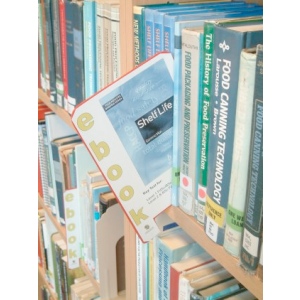Just as many predicted, sales figures show that more people are opting to buy e-books rather than printed copies. Sales of e-books rose 167% in June, reports Publishers Weekly, with sales totaling $473.8 million for the first half of the year. But sales of print books -- both paperbacks and hardcovers -- continues to decline.
It isn't just publishers that are scrambling to adjust their business models to the growing demand for e-books; so too are libraries having to reconsider how they will provide content for their patrons.
Even though there's keen interest on the part of library patrons to check out e-books, making a move to digital loans is not going to be easy. That's true for all libraries, but it's especially true for school libraries, many of which already face budget woes and as such, have to weigh carefully how to invest in new books to stock the shelves.
There are lots of considerations libraries must make: which e-reader(s) will they adopt? After all, e-readers are tied to their associated bookstores: Kindle to Amazon, Nook to Barnes & Noble, iPad to iBooks (even though the latter does offer apps for the other e-readers). The e-readers not only have different features (black-and-white screens versus color, for example, touchscreens versus keypads) but their bookstores offer different selections. That's a big consideration when you're looking specifically for children's literature rather than just for general interest ("grownup") fiction or non-fiction.
But the biggest problem, according to librarian Buffy Hamilton, author of the Unquiet Librarian blog, is DRM. Digital Rights Management is what restricts content from being shared across devices. It means that e-books from Amazon can't be read on Nooks, and e-books from Barnes & Noble won't work on Kindles. It means, oftentimes, that kids can't bring their own devices from home to use for library check-outs.


